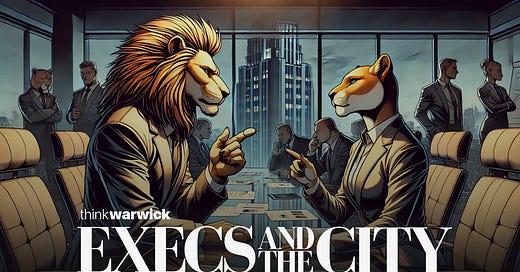Create Unfair Advantages, Not Just Negotiations
Stop leaving millions on the table. True negotiation mastery isn't about confrontation—it's about systematically building overwhelming unfair advantages long before you reach the table.
👋🏻 Jacob here,
Welcome to the latest edition of Execs and the City, where we explore how elite leaders create unfair advantages in high-stakes career decisions.
Annual subscribers get access to our Jacob AI coach, Substack chat, and annual member-only discounts on courses, premium career tools, and direct consults.
Inner Circle subscribers save big on all courses and premium tools, get early access to new resources, plus get discounted career consultations.
Keep reading with a 7-day free trial
Subscribe to Execs and the City to keep reading this post and get 7 days of free access to the full post archives.




